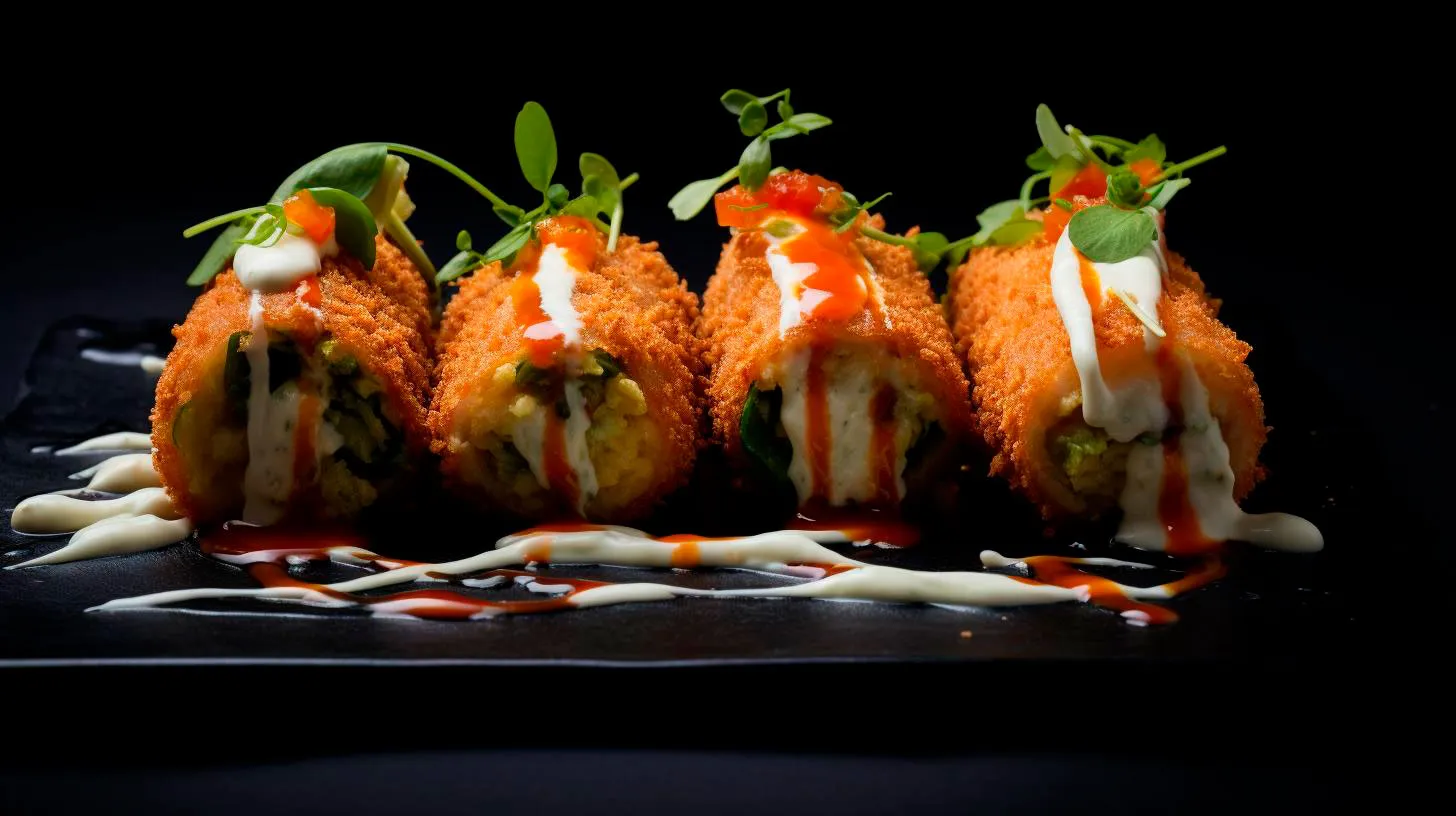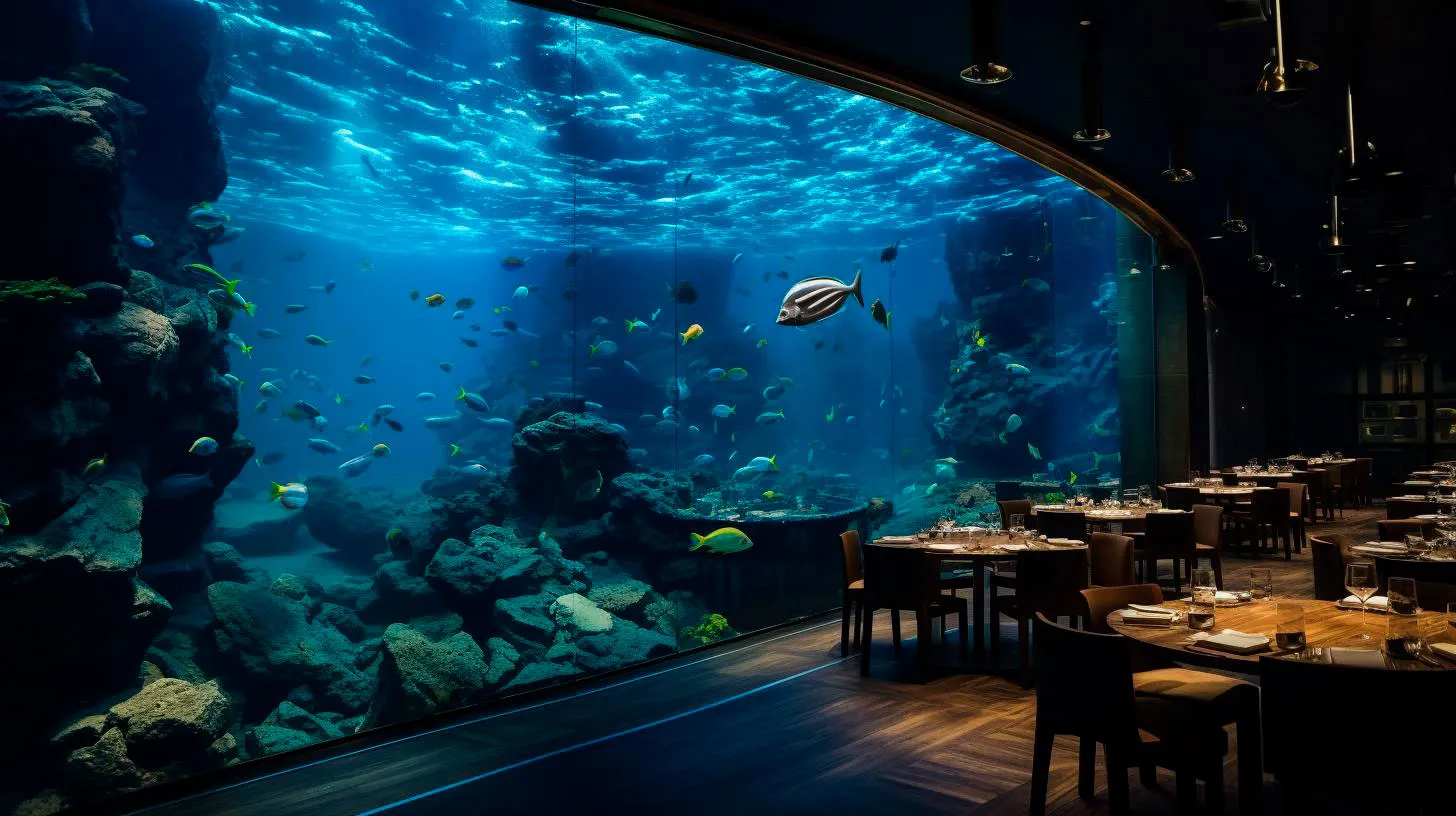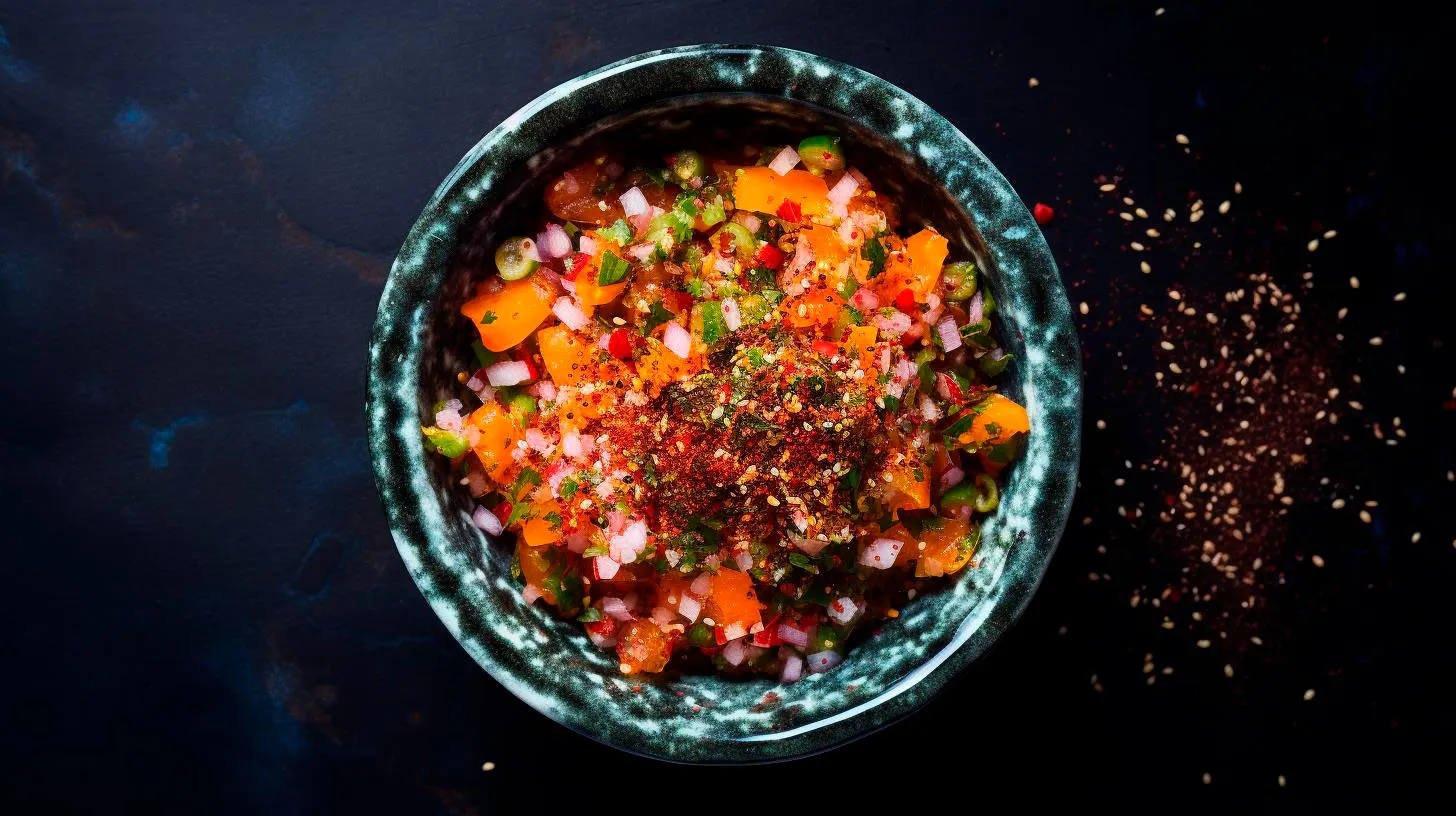Preserving Ocean Ecosystems through Sustainable Fishing
In order to ensure the long-term health of our oceans, it is crucial to promote sustainable fishing methods that prioritize both environmental preservation and the livelihoods of fishermen.
The Importance of Sustainable Fishing
Sustainable fishing is the practice of catching fish in a way that minimizes the impact on the ecosystem and ensures the long-term viability of fish populations. By following sustainable practices, fishermen can help maintain biodiversity, protect endangered species, and support the overall health of ocean ecosystems. Here are some key advantages and features of sustainable fishing:
- Preserving biodiversity: Sustainable fishing practices aim to maintain the balance of marine ecosystems, ensuring that multiple species can coexist and thrive. By avoiding overfishing and minimizing bycatch, sustainable fishing helps protect the biodiversity of our oceans.
- Protecting endangered species: Endangered species, such as sea turtles, sharks, and dolphins, often fall victim to non-selective fishing gear. Sustainable fishing methods prioritize the use of more selective gear, reducing the unintentional capture of these vulnerable creatures.
- Reducing bycatch: Bycatch refers to the unintentional capture of non-target species. It has significant negative impacts on marine ecosystems, leading to the depletion of certain species and disrupting the food chain. Sustainable fishing practices employ techniques and gear modifications that minimize bycatch and promote responsible fishing.
- Preserving habitats: Unsustainable fishing practices, such as bottom trawling, can cause extensive damage to marine habitats like coral reefs and seafloors. Sustainable fishing methods avoid destructive fishing practices, helping to maintain the health and productivity of these important habitats.
- Supporting local communities: Sustainable fishing plays a vital role in supporting the livelihoods of coastal communities that depend on the ocean for their income and food security. By adopting sustainable practices, fishermen can ensure the long-term sustainability of their fisheries and guarantee a steady source of income for future generations.
The Role of Technology in Sustainable Fishing
In recent years, technology has begun to play a crucial role in promoting sustainable fishing practices. Innovative solutions and tools have been developed to help fishermen navigate the challenges of sustainable fishing while still meeting the demands of a growing global population. Here are some key technological advancements driving sustainable fishing:
1. Satellite Monitoring and Tracking Systems
Satellite-based monitoring and tracking systems provide real-time information on fishing activities, enabling authorities to ensure compliance with regulations and prevent illegal, unreported, and unregulated (IUU) fishing. These systems also help identify areas that are at risk of overfishing and enable the implementation of sustainable fishing practices.
2. Data Analytics and Artificial Intelligence
Data analytics and AI technology have the power to revolutionize sustainable fishing practices. By analyzing vast amounts of data, these tools can identify patterns and trends, helping fishermen make informed decisions about when and where to fish. This reduces the chances of overfishing and promotes efficient resource management.
3. Improved Fishing Gear and Techniques
Technological advancements have led to the development of more environmentally friendly fishing gear and techniques. For example, the use of more selective fishing gear, such as modified trawls and escape panels, helps reduce bycatch and minimize the impact on non-target species. Additionally, innovations like fish aggregating devices (FADs) enable fishermen to target specific species without causing significant disruption to the ecosystem.
The Way Forward
In order to ensure the long-term health of our oceans and preserve their ecosystems, it is crucial that we continue to promote and adopt sustainable fishing practices. Governments, fisheries organizations, and consumers all have a role to play in supporting sustainable fisheries. Here are some crucial takeaways:
- Policy support: Governments should implement and enforce sustainable fishing policies and regulations. This includes monitoring fishing activities, managing fish stocks, and supporting research and development of sustainable fishing practices.
- Consumer awareness: Consumers can make a big impact by choosing sustainably sourced seafood. By selecting products with eco-labels, such as the Marine Stewardship Council (MSC) certification, consumers can encourage sustainable fishing practices.
- Investing in research: Continued research and innovation are essential to the development of sustainable fishing practices. Governments, NGOs, and private-sector organizations should invest in research and development programs that promote sustainable fishing techniques and technologies.
- Collaboration and partnerships: Collaboration between governments, fisheries organizations, and scientific institutions is key to achieving sustainable fishing. By working together, stakeholders can share knowledge and best practices, ensuring the success of sustainable fishing initiatives.
Preserving ocean ecosystems through sustainable fishing is not just an environmental imperative; it is also crucial for the long-term well-being of coastal communities and the global population as a whole. By adopting sustainable fishing practices and leveraging technological advancements, we can protect the biodiversity of our oceans and guarantee a sustainable future for generations to come.
Embracing Sustainability at the Heart of Sushi Culture
In recent years, as the world grapples with environmental challenges, the sushi industry has become a beacon of hope, leading the way in adopting sustainable practices that ensure the longevity of the oceans and the survival of marine life.
The Sustainable Sushi Movement
The sustainable sushi movement is a significant shift in the sushi industry that seeks to address the negative impacts of overfishing, habitat destruction, and unsustainable fishing practices. Sushi chefs, restaurant owners, and consumers are increasingly recognizing the importance of sourcing fish responsibly and supporting sustainable seafood options. By making conscious choices, they are not only preserving the delicate ecosystem but also contributing to the long-term viability of their own businesses.
The Advantages of Sustainable Sushi
- Preserving Marine Biodiversity: Sustainable fishing practices prioritize the well-being of marine ecosystems, helping to maintain the delicate balance of species and habitats. By choosing sustainable sushi, we can play our part in preserving marine biodiversity.
- Protecting Endangered Species: Many sushi favorites, such as Bluefin tuna, are on the brink of extinction due to overfishing. Opting for sustainable alternatives like responsibly sourced salmon or mackerel can help protect these endangered species and their habitats.
- Supporting Local Fisheries: Embracing sustainable sushi means supporting local fishermen who employ responsible fishing methods. This, in turn, helps to boost local economies and communities that rely on fishing.
- Ensuring Food Security: Unsustainable fishing practices can ultimately deplete fish stocks, jeopardizing the availability of seafood for future generations. By embracing sustainable sushi, we can help ensure the long-term food security of our planet.
Key Takeaways for Sushi Lovers
For sushi lovers around the world, there are several key takeaways to keep in mind when enjoying this exquisite cuisine:
- Choose Responsibly Sourced Fish: Look for sushi restaurants and suppliers that prioritize sustainable seafood options. Ask about the origin and sourcing methods of the fish on the menu.
- Try Sustainable Alternative Ingredients: Expand your palate and explore sushi made with sustainable alternatives like tofu, egg, or vegetables. These options offer equally delightful flavors while reducing the overall ecological impact.
- Support Local Sushi Restaurants: By patronizing local sushi establishments that prioritize sustainability, you are contributing to positive change within the industry and showing your support for the environment.
- Spread Awareness: Educate others about the importance of sustainable sushi. Share information about responsible fishing practices, endangered species, and the benefits of making sustainable choices.
The Numbers Speak: Sustainable Sushi in Action
The impact of embracing sustainability in the sushi industry is already evident in some remarkable statistics:
- According to the Marine Stewardship Council (MSC), over 20,000 tons of sustainable seafood were supplied to sushi restaurants globally in 2020.
- Several countries, including the United Kingdom and Japan, have witnessed a surge in the number of sushi restaurants obtaining MSC certification, which guarantees the use of sustainably sourced seafood.
- In a survey conducted by the World Wildlife Fund (WWF), 85% of sushi consumers expressed their willingness to pay more for sustainably sourced sushi.
- Leading sushi chains have taken significant steps towards sustainability. Yo! Sushi, for instance, has committed to sourcing 100% sustainable seafood for their entire menu.
As sushi lovers, we have the power to make a difference. By choosing sustainable sushi, we are not only satisfying our taste buds but also supporting a brighter and more responsible future for our oceans. Let us embrace sustainability at the heart of sushi culture and preserve this timeless culinary art for generations to come.
A Delicious Way to Support Sustainable Seafood Practices
Thankfully, there are initiatives and practices in place to promote sustainable seafood options, preserving marine ecosystems for future generations. In this article, we will explore the importance of sustainable seafood practices and how you can enjoy a scrumptious seafood meal while supporting the environment.
The Importance of Sustainable Seafood
1. Preserving Marine Ecosystems: Sustainable seafood practices ensure that fishing doesn’t deplete fish populations, allowing marine ecosystems to thrive. This helps maintain the delicate balance of marine life and protects biodiversity.
2. Combatting Overfishing: Overfishing can lead to depleted fish stocks and disrupt the marine food chain. By opting for sustainable seafood, you contribute to combating overfishing, allowing fish populations to regenerate.
3. Supporting Local Economies: Sustainable fishing practices help local fishing communities thrive economically. By choosing sustainably sourced seafood, you support the livelihoods of fishermen and their families.
What Makes Seafood Sustainable?
To make sure your seafood choices are sustainable, look for certain practices and certifications:
1. Marine Stewardship Council (MSC) Certification: The MSC certification guarantees that the seafood is sourced from fisheries that meet strict sustainability standards.
2. Aquaculture Stewardship Council (ASC) Certification: ASC certification ensures that farmed seafood has been produced in an environmentally and socially responsible manner.
3. Wild-Caught vs. Farmed: Choosing sustainably wild-caught seafood ensures that you are supporting responsible fishing practices that protect natural habitats. However, certain farmed seafood options, such as oysters and mussels, can also be sustainable choices.
Delicious Sustainable Seafood Options
1. Wild Alaskan Salmon: Known for their high omega-3 content, wild Alaskan salmon is sustainably sourced and offers a flavorful and healthy option for seafood lovers.
2. Arctic Char: This fish, closely related to salmon, is a sustainable choice with a mild yet distinct flavor. It is often farmed using environmentally friendly practices.
3. Pacific Halibut: Pacific halibut is known for its firm, flaky white meat and is sustainably harvested. This versatile fish can be prepared in various ways, making it a popular choice.
4. Dungeness Crab: A succulent seafood option, Dungeness crab is caught using pots and traps, reducing the impact on the ocean floor and minimizing bycatch.
5. US Atlantic Sea Scallops: These sweet and delicate scallops are responsibly harvested and are a delicious addition to any seafood dish.
Making Sustainable Seafood Choices
1. Check for Labels: Look for seafood products labeled with MSC or ASC certifications. These labels indicate that the seafood has been sourced sustainably.
2. Research the Source: Learn about the fishing practices and sources of your favorite seafood. Support local fisheries that follow sustainable practices.
3. Be Mindful of Overfished Species: Avoid ordering seafood from species that are known to be overfished, such as bluefin tuna or Chilean sea bass.
4. Explore Alternative Seafood Choices: While some popular seafood options may be overfished, there are often sustainable alternatives available. Try new seafood varieties to expand your culinary horizons.
The Bottom Line
When it comes to enjoying seafood, making sustainable choices is essential for the health of our oceans and the conservation of marine life. By opting for sustainably sourced seafood options and supporting initiatives such as MSC and ASC certifications, we can all contribute to the preservation of marine ecosystems and ensure that future generations can continue to relish the delicious flavors of the sea.



